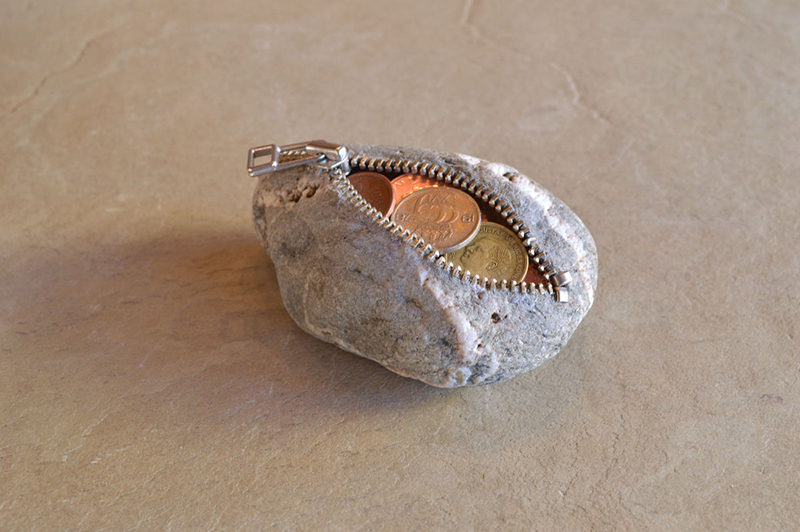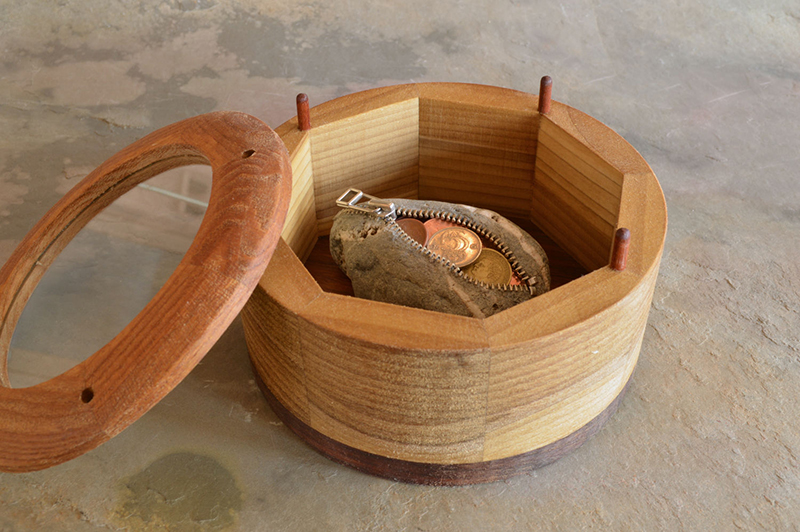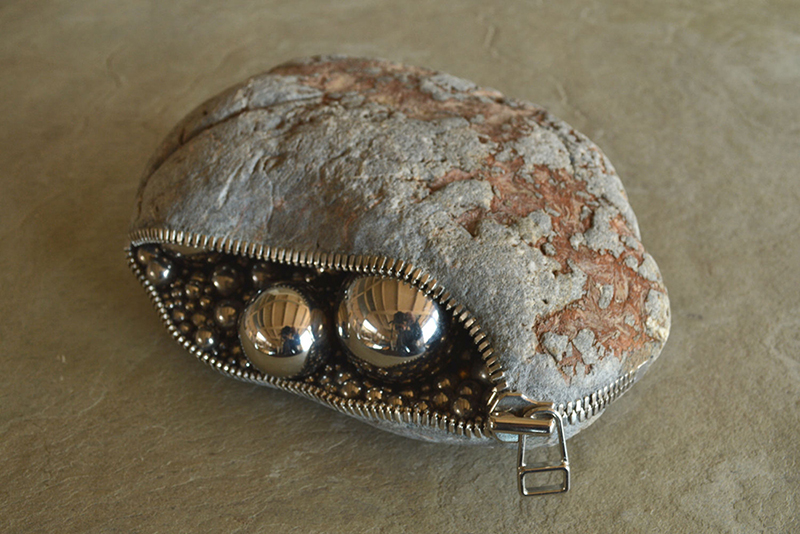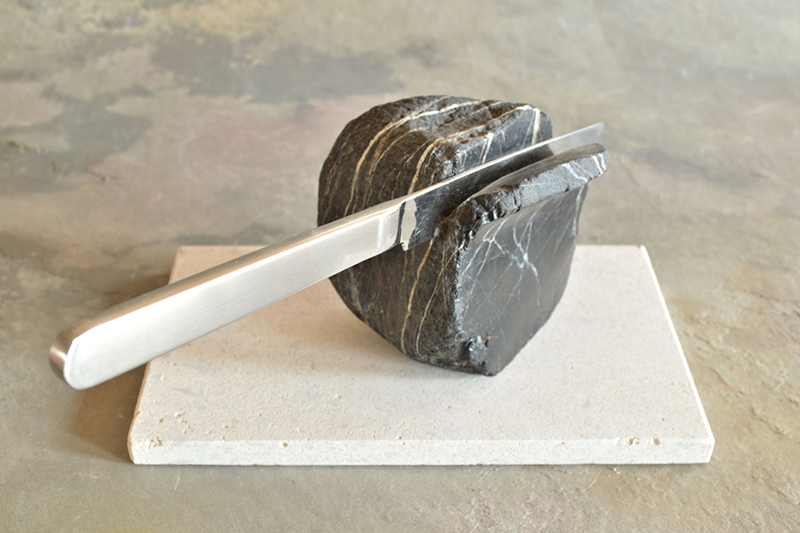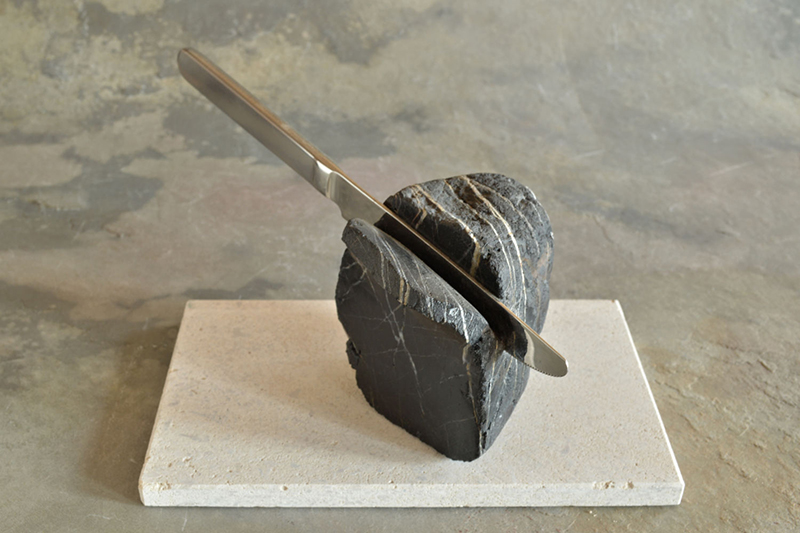Pleasure of Paradox
Introduction by Keiko Fukai
ITO Hirotoshi’s work is unique, provocative, and whimsical. Every piece of his sculpture inevitably triggers a second look with surprise and smile. Using the common material such as stone, seashells, and zipper, Ito displays the remarkable skill and creates paradox and narratives with the mysterious object.
ITO is the 5th generation head of a family of stone masons in Matsumoto, Nagano Prefecture, who have traditionally specialized in marble and granite funerary monuments. Not unlike his family tradition, Ito’s individual works are like time capsules, each capturing a fragile human moment.
My family has been involved in stone work since 1879. From my birth I grew up surrounded by various kinds of stone and work such as stone lanterns and graves tones.
Although I was determined to eventually take over my family business, I entered the Metal Work Department of Tokyo University of the Arts. The stimulating encounters with other metal artists in the school, and their work, became the foundation of my way of thinking and of my creativity.
My work can be divided into two groups. One is solid sculpture carved from marble or granite where I alter the natural surface of the stone into sculptural forms that do not appear to be stone but some other material. The other group is made from beach stones where I use the natural forms of the stones and make alterations and additions that give the natural stones different character. All of my work in both categories relates to the ordinary images, objects and experiences in daily life. A prominent characteristic of both types of my work is my attempt to create the illusion that the stone is something MORE than stone or is a different material altogether.
Matsumoto City, where I live, is surrounded by splendid mountains and is richly endowed with natural beauty. The stones delivered from these mountains have been washed by fresh streams of water over very long periods of time, and each stone has a unique form that has been created naturally. As I gather stones on the riverbank, I imagine stories and works of art I can create with them. However, I try to emphasize the natural shapes, colors and beauty of these stone and generally try not to change their original shapes. Respecting and utilizing the natural characteristics of original material is a very old and important aspect of Japanese culture. We have a concept of creativity known as mitate, which involves creating new values by taking something that holds certain significance in one context and placing it in a different context. A typical example is the raked gravel in a temple garden that resembles flowing water. Although I am a contemporary artist I feel that such ancient Japanese concepts are deeply embedded in my DNA.

